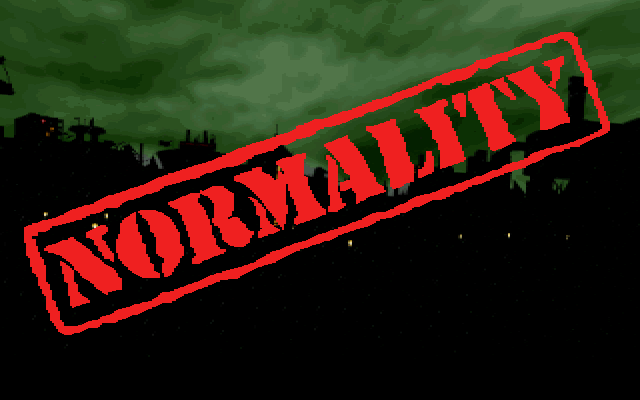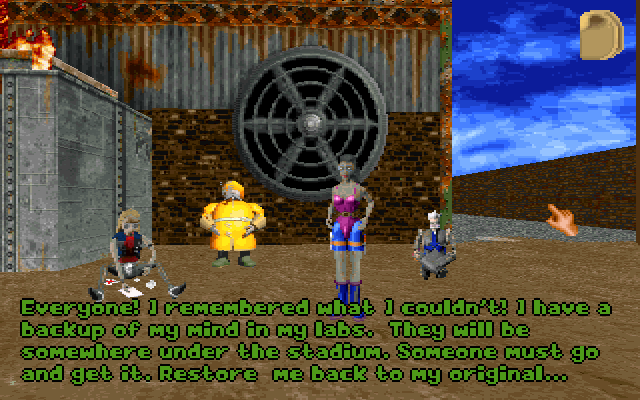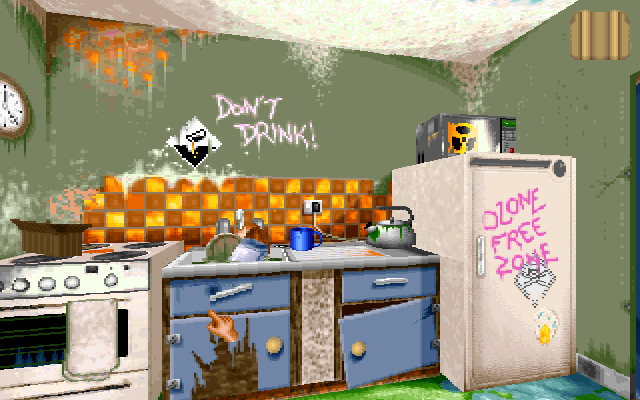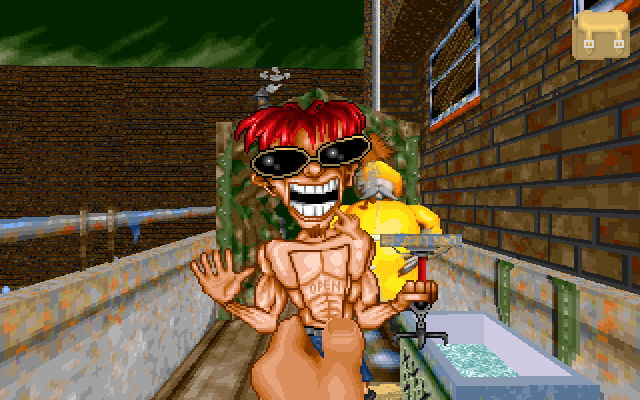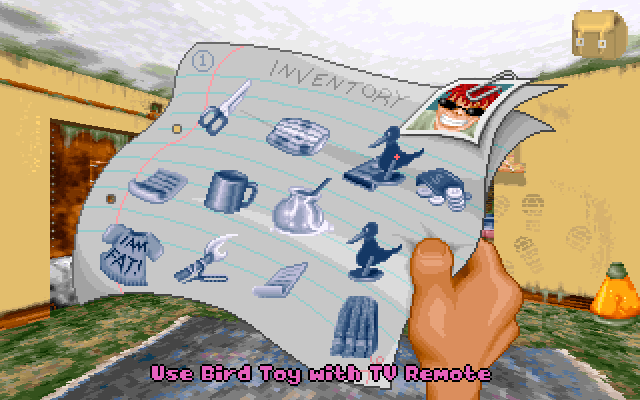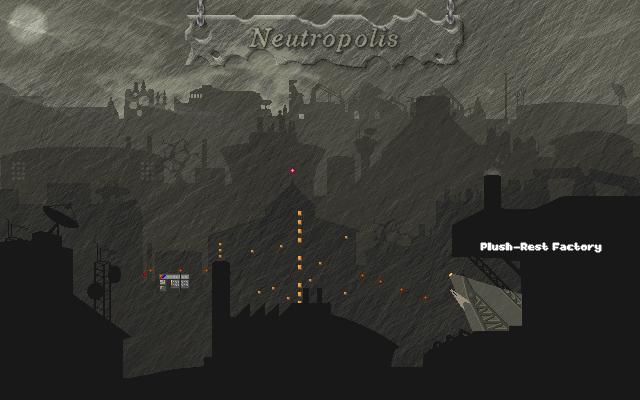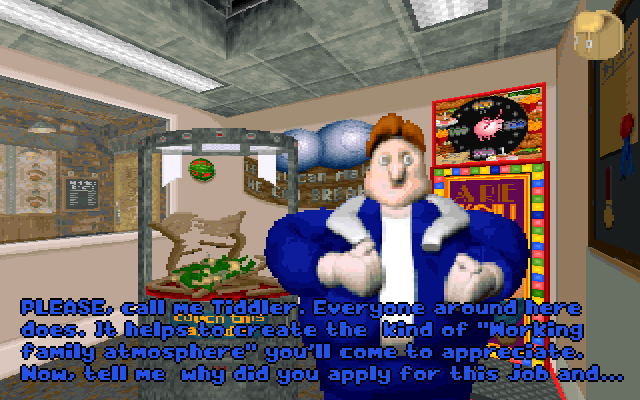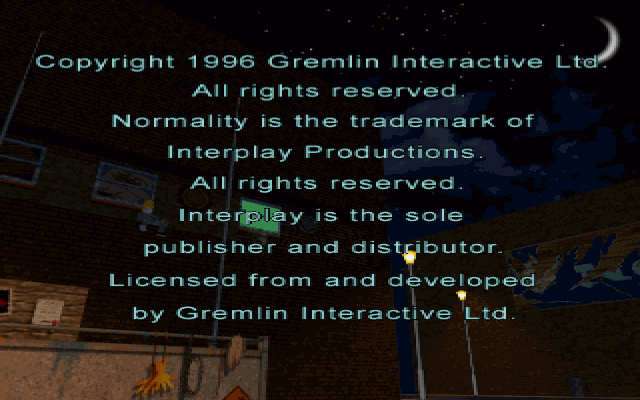Normality (Gremlin Interactive) - 1996
Series: Let's Adventure! A Journey into Adventure Games (1980-1999)This review is part of the Let's Adventure! series. See all reviewed games sorted by rating here.
- ← Hugo II, Whodunit? (Gray Design Associates) - 1991
- Normality (Gremlin Interactive) - 1996
- → Space Quest IV: Roger Wilco and the Time Rippers (Sierra On-Line) - 1991
Article 78 of 101 in this series.
Normality is a 3D graphic adventure, released in June 1996 by Gremlin Interactive. All cut-scenes in the game are pre-rendered. The game’s engine was later used in the game Realms of the Haunting.
Kent Knutson is a teenager who lives in the city of Neutropolis. The city is controlled by a totalitarian regime, which prohibits people to express any emotions that would deviate from the prescribed norm - such as joy and happiness. Kent is arrested by the Norms, the police force of Neutropolis, and put in prison for whistling a merry tune. In prison, he received an anonymous note that tells him that there is a resistance group somewhere in the city, which seeks to overthrow the dictator of Neutropolis. The question is - how can Kent find that resistance group?.1
What sets this game apart from other adventure games of the era is that you’re navigating a 3D world with a first person perspective. This is what you’d expect from Doom or Duke Nukem 3D, but not a point and click title.
For the first time in this series I’m in including an animated GIF just to show this off. As you navigate the game world you move around with the arrow keys and can pan up and down to see above or below you.
The game design incorporates these mechanics pretty frequently as you’ll occasionally find yourself unable to progress because the item you need is behind something, or it’s above you in a narrow space and you need to look up and reposition yourself to interact with something.
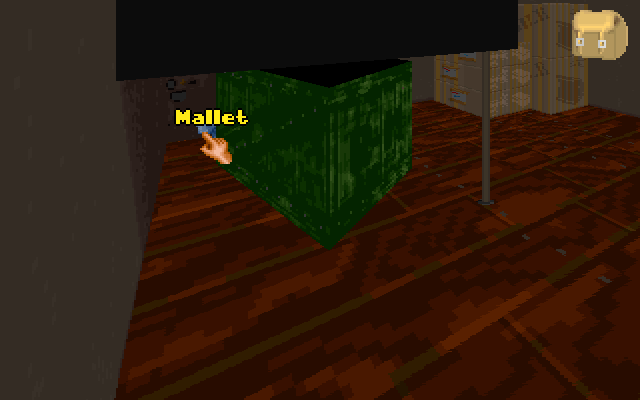 You need to navigate to the back of the room and look down while moving around the crate to see this mallet
You need to navigate to the back of the room and look down while moving around the crate to see this mallet
Though the game world is presented in 3D, as you move around you also have a cursor you pan over the screen that will highlight things you can interact with. Clicking on an action area will bring up a “voodoo doll” that is basically a visual representation fo the verbs you can use to interact with the thing you’ve highlighted.
This is not a unique mechanic and appears in a lot of adventure games at this time (such as Full Throttle). Once you bring up the voodoo doll (that’s what they call it in the manual), moving the mouse cursor over the various verbs will animate them slightly so you know what you’re about to select.
The options are limited to the usual suspects of LOOK, USE, OPEN, TALK and GET.
The story progresses through various interactions with NPCs, which involves navigating basic dialog trees. There’s really nothing innovative here, though the US release of the game has Kent voiced by Corey Feldman which adds a nice nostalgic flair to the experience.
Aside from character interactions, the story also progresses through various pre-rendered cutscenes. These all have a very “90s” feel to them and though dated by today’s standards definitely don’t feel out of place in this game world.
These animated sequences occur pretty often, so the pace of the game is pretty consistently maintained. You’ll find yourself moving around each game scene, hovering the cursor over everything to see what you’re able to interact with, trying all available verbs to see what works then frequently being rewarded with an animation if you picked correctly.
A large portion of this game involves fetch quests and item combination puzzles. Maybe this is just an artifact of when this game came out, but I had a lot of trouble making progress without resorting to a walkthrough as a number of puzzles were a bit obtuse.
This could just be due to me being too impatient, but I found myself just randomly clicking each item on every other item more than once to try and make some progress when I’d get stuck.
I’m assuming the developers may have expected players to get stuck as the manual has hints for most of the game’s main areas!
You have access to a map (press M to access it) which opens up various game locations as you progress. If you don’t know about this then once you get out of the apartment you’re imprisoned in initially you won’t be able to progress with the game (yes, I got stuck like that at first).
Typically you’re just jumping between the various locations picking up items you may need to solve puzzles.
There aren’t all that many characters to interact with, but they will typically help move you in the right direction by giving plot detail or objectives.
As you progress, the game’s goofy soundtrack is playing in the background which enhances the mood appropriately. This whole game just sort of feels like you’re playing through an episode of a Saturday morning cartoon of that era - which isn’t a bad thing.
After solving a bunch of weird puzzles you’ll eventually find yourself underneath the stadium, which is a huge maze. This section can be a bit frustrating as you’ll first need to figure out how to get batteries for the night vision goggles - which involves stumbling around the maze in the dark for a while.
This final sequence just didn’t make a lot of sense, but it is weird and confusing in a way that is fitting to this title. You’ll end up finding Saul’s brain, which you need to bring up on stage in the stadium so that it can somehow change Paul’s thinking and free Neutropolis from his evil reign … or something like that.
I honestly had a lot of fun with this game, though it can be frustrating at times. I really appreciated a different approach to this genre through a 3D game world, and the story was definitely swinging for the fences in trying to present a unique experience.
There’s a great writeup by The Digital Antiquarian that goes into a lot more detail about this game that I’d highly recommend if you find this interesting.
Since I haven’t covered another title like this yet, and it presented a new take on the genre I think this one is worth checking out.
Game Information
| Game | Normality |
| Developer | Gremlin Interactive |
| Publisher | Interplay |
| Release Date | June 1996 |
| Systems | DOS |
| Game Engine |
My Playthrough
| How Long To Beat? | 6 hours |
| Version Played | DOS via DOSBox-X |
| Notes | Walkthrough 1, Walkthrough 2, Manual |
Score
See here for a refresher on how we’re scoring these games.
| Atmosphere (20) | 15 |
| Story (25) | 14 |
| Experience (15) | 11 |
| Impact (10) | 5 |
| 64% |
Gallery
Footnotes
Description from Moby Games ↩︎
